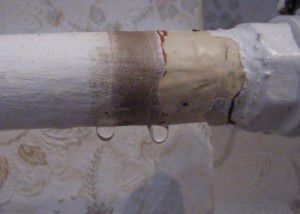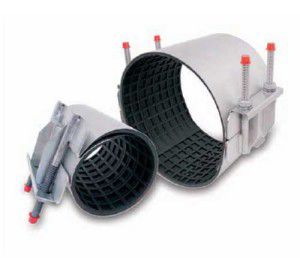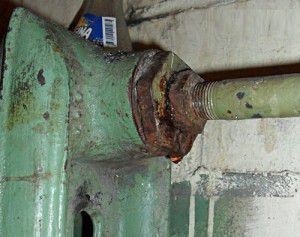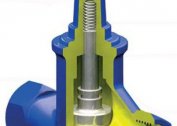During the operation of any heating system, emergency situations can occur. Loss of tightness in a particular area is the most common problem. Therefore, each owner of a private house or apartment should know how to eliminate the leakage of the heating system: pipes, batteries, radiators. The master’s call can drag on for hours or even a day, and during this time the damage from damage will only grow.
Emergency Prevention Measures
Even before you need to eliminate the leakage of the heating pipe, you can take certain actions that minimize the likelihood of its occurrence. They are the basis for the maintenance of the heating system and must be carried out at strict intervals.
After the first start-up of newly installed pipelines and heating devices, a plan should be drawn up to check their condition. Specialists identify the following problem areas in which damage and depressurization most often occur:
- Mechanical connections. Despite the fact that they are rarely used, their presence is possible when laying metal or metal-plastic pipes. Inspection frequency - 1 time per month;
- Mounted fittings - taps, gate valves, control devices (manometers, thermometers). Is it possible, and how to eliminate the leakage of heating batteries in these places? To do this, check the tightness of the connection of the installed elements. Inspect also once a month;
- Compliance with the system operation mode - temperature and maximum pressure levels. Even before you eliminate the leak in the plastic heating pipe - you need to control all the parameters of the system. In most cases, it is their excess that causes the destruction of system elements. It is checked every day.
But even these measures do not guarantee a non-repetitive heating operation. In some cases, the cause of a rupture of pipes or radiators is a small hidden factory defect, which cannot be visually determined. A slight thinning of the wall or a poor-quality weld is the most common cause of leakage. But how to eliminate a leak in the heating system at home, if the heating works, and hot water literally whips? No need to panic - follow the instructions.
In no case do not try to fix the leakage of any heating pipe by hand - it is dangerous to health. Temporarily, until the pressure drops, you can put a thick blanket on the battery or pipe so that the flow of hot water does not damage the walls or furniture in the room.
Repair of heating pipes
Pipelines are most likely to leak. This is explained by their large length and various degrees of load depending on the distance from the boiler. The first signal of occurrence of depressurization in a certain section of the pipeline is the appearance of condensate. Having treated this part with a dry rag, you need to observe - will not small drops appear on the surface of the pipe? If this happens, urgent repair measures must be taken.
But how to eliminate the leakage of the heating system quickly and with minimal losses? First you need to isolate this area of the system - lay a waterproof material (PVC film) on the floor and then perform the following actions:
- Turn off the boiler. If it is solid fuel - try to reduce the temperature in the furnace. Attention - fuel cannot be filled with water. A sharp temperature difference can cause damage to the walls of the boiler and heat exchanger.
- Turn off the centrifugal pump.
- Open air safety valve. This will reduce the pressure in the system, reducing the pressure of the water.
It is preliminary recommended to purchase special repair clamps. With their help, you can quickly localize the place of damage. To eliminate leaks in an autonomous home heating system is one of the best solutions to the problem.
Using clamps for repairs
To create a complete repair kit, you should purchase several types of clamps that are designed to be installed on pipes of various diameters. Traditionally, 20.24, 32 and 40 mm pipes are used for heating. Accordingly, you need to purchase clamps of this size.
Effectively eliminate the leakage of the heating pipe with their help, you can simply install on the pipe and tighten the screws. It is necessary to pay attention to the size of the damage - the length of the gap can exceed the width of the clamp. Then you can install several repair elements or resort to the proven "grandfather" method.
You can quickly eliminate leaks in the heating battery with the help of simple car clamps. Instead of a special gasket in this case, use any dense rubber.
This will require any soft rubber, for example - from a bicycle camera. It is laid in several layers around the leak and pressed with 2 or three clamps.
This method can be used to eliminate leaks in a plastic heating pipe and steel. However, it has several disadvantages. The main one is a relatively small degree of pressure. The steel body of the special repair clamp can withstand a fairly high pressure. And you need to remember that in rubber, under the influence of temperature, elasticity increases significantly. Therefore, this method can be used as a temporary measure until the replacement of the main section or the installation of a more reliable repair element. Elimination of leaks in the heating radiator does not mean the complete serviceability of the system. Then you still need to replace the damaged area.
Mechanical joints
If it is necessary to eliminate a leak in the heating system of a house in the place where the pipes join with each other or with a radiator, you must first make a visual inspection of the damaged area. The procedure is as follows:
- Using a pipe wrench, tighten the connecting element - nut or fitting. If the leak does not stop, replace the gasket. To do this, put a large water tank under the place of damage, then carefully unscrew the connectors and remove the old gasket.
- As a new one, it is best to use paronite. This material is not as susceptible to change under the influence of temperature as rubber.
Repair by such methods can only be carried out on straight sections of the pipeline. But how to eliminate a leak in the heating radiator on a ribbed surface or at the junction of the sections? Installation of a repair clamp there is not possible. Therefore, other methods of restoring the tightness of the system must be applied.
To eliminate leaks in the plastic heating pipe, you can use special welded clamps. However, they are of high cost and the surface must be completely dry before installation.
Leaking heating radiator
Determining the exact leakage time in the battery is sometimes problematic. Flowing down the surface, water can fill a significant part of the radiator. To find the problem place, wipe the device completely. Then find the exact spot of the rush.
How to eliminate the leak of a heating radiator if the water pressure is large enough? It must be remembered that its temperature can reach 90 ° C. Therefore, you must strictly follow the safety rules. Having completed the above measures to reduce the pressure in the system, it is recommended to do the following:
- If the radiator is connected in parallel (two-pipe system), close the shut-off valves.
- Using an installed Mayevsky tap, lower the pressure level in the battery.
- Wait until the coolant stops flowing from the defective area.
Then, to eliminate leaks in the heating battery, you need to use a special mastic - cold welding. Its most common form is epoxy mastic with additives.
There are currently several models of these repair compounds on the market. The most common leaks in heating radiators are Fast Steel, Super Epoxy Moment, and Abro Steel. Before using a certain composition, you need to carefully read the instructions. For example, the two-component “SuperEpoxy Moment” is not intended for sealing polyethylene or propylene pipes. But it will successfully eliminate the leak in the heating radiator from aluminum or cast iron.
After mixing the epoxy resin with the hardener in the attached kit in a syringe, the resulting composition can be applied to the place of damage. After 2-3 hours, a strong "patch" is formed, which will prevent further leakage of the coolant. In the same way, it is possible to eliminate a leak in the heating pipe from metal or copper. Before use, one-component epoxy resin compositions must be thoroughly kneaded and then applied to the depressurization site.
The thickness of the patch almost does not affect its mechanical strength. Usually it should not exceed 3-4 mm.
What method is best used to eliminate leaks in the heating system: pipes, batteries, radiators are made of various materials and are not always suitable for installing a reliable clamp. In this case, you can make a combined design of mastic, elastic rubber and cloth bandage. In this way, it is possible to eliminate the leak before overhauling.
The video shows the most common ways to repair pipes and radiators:






